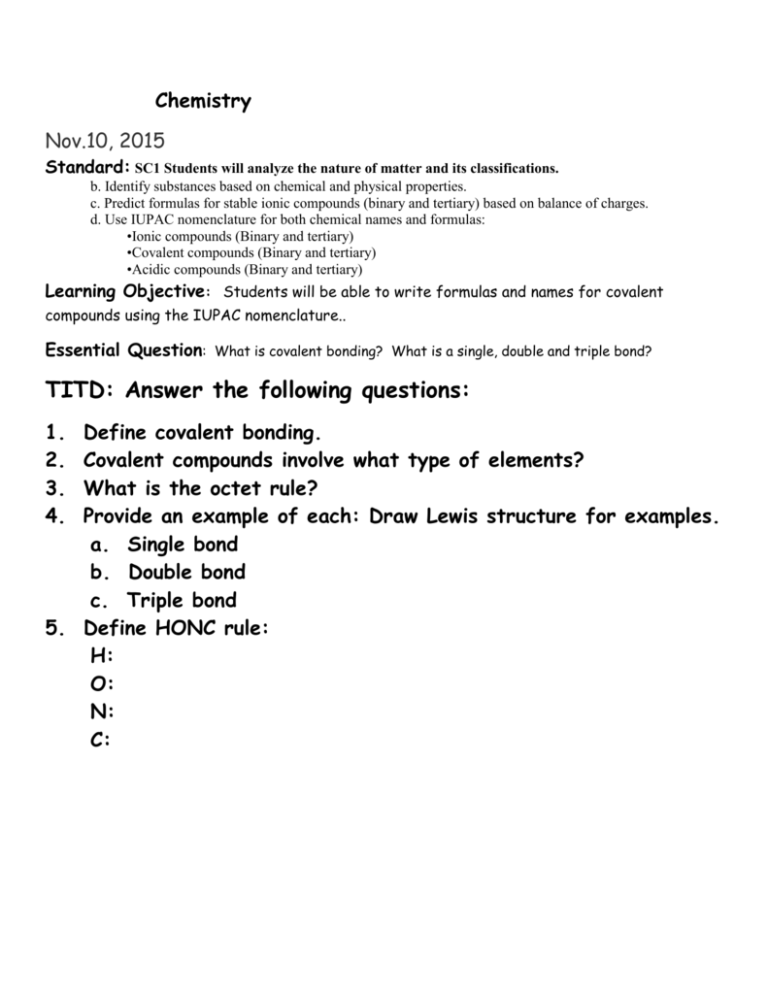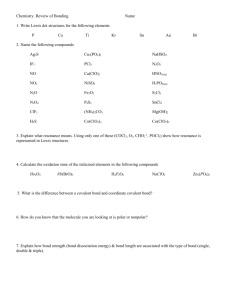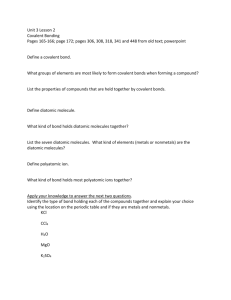chem.mw.nov.10.2015
advertisement

Chemistry Nov.10, 2015 Standard: SC1 Students will analyze the nature of matter and its classifications. b. Identify substances based on chemical and physical properties. c. Predict formulas for stable ionic compounds (binary and tertiary) based on balance of charges. d. Use IUPAC nomenclature for both chemical names and formulas: •Ionic compounds (Binary and tertiary) •Covalent compounds (Binary and tertiary) •Acidic compounds (Binary and tertiary) Learning Objective: Students will be able to write formulas and names for covalent compounds using the IUPAC nomenclature.. Essential Question: What is covalent bonding? What is a single, double and triple bond? TITD: Answer the following questions: 1. 2. 3. 4. Define covalent bonding. Covalent compounds involve what type of elements? What is the octet rule? Provide an example of each: Draw Lewis structure for examples. a. Single bond b. Double bond c. Triple bond 5. Define HONC rule: H: O: N: C: Opening: Bond length and energy between single, double and triple bonds show a definite pattern. We will discuss the differences. If the bond order is zero, the molecule cannot form. The higher bond orders indicate greater stability for the new molecule Example 1: CN− Determine the bond order for cyanide, CN-. SOLUTION 1) Draw the Lewis structure. 2) Determine the type of bond between the two atoms. Because there are 3 dashes, the bond is a triple bond. A triple bond corresponds to a bond order of 3. Example 2: H2 Determine the bond order for hydrogen gas, H2. SOLUTION 1) Draw the Lewis structure. 2) Determine the type of bond between the two atoms. There is only one pair of shared electrons (or dash), indicating is a single bond, with a bond order of 1. Work: Students will complete the ppt for covalent bonding ..\Unit 4.Chemical Bonding\CovalentBonding.pptx The octet rule will be readdressed (remediation) to further understanding of covalent bonding. Students will understand single, double and triple bonds Students will complete the practice of covalent compounds by drawing the Lewis structure for each compound, the structural formula for each and the formula for each. Closing: Have you mastered the Lewis dot structure and structural formula for covalent bonds?







